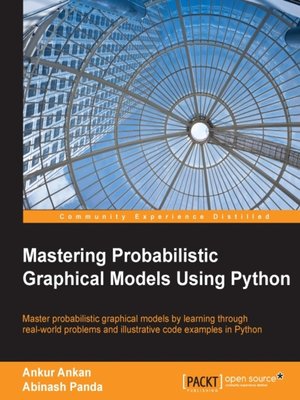
Sign up to save your library
With an OverDrive account, you can save your favorite libraries for at-a-glance information about availability. Find out more about OverDrive accounts.
Find this title in Libby, the library reading app by OverDrive.



Search for a digital library with this title
Title found at these libraries:
| Library Name | Distance |
|---|---|
| Loading... |
Master probabilistic graphical models by learning through real-world problems and illustrative code examples in Python
About This Book
Who This Book Is For
If you are a researcher or a machine learning enthusiast, or are working in the data science field and have a basic idea of Bayesian Learning or Probabilistic Graphical Models, this book will help you to understand the details of Graphical Models and use it in your data science problems. This book will also help you select the appropriate model as well as the appropriate algorithm for your problem.
What You Will Learn
In Detail
Probabilistic Graphical Models is a technique in machine learning that uses the concepts of graph theory to compactly represent and optimally predict values in our data problems. In real world problems, it's often difficult to select the appropriate graphical model as well as the appropriate inference algorithm, which can make a huge difference in computation time and accuracy. Thus, it is crucial to know the working details of these algorithms.
This book starts with the basics of probability theory and graph theory, then goes on to discuss various models and inference algorithms. All the different types of models are discussed along with code examples to create and modify them, and also to run different inference algorithms on them. There is a complete chapter devoted to the most widely used networks Naive Bayes Model and Hidden Markov Models (HMMs). These models have been thoroughly discussed using real-world examples.
Style and approach
An easy-to-follow guide to help you understand Probabilistic Graphical Models using simple examples and numerous code examples, with an emphasis on more widely used models.







